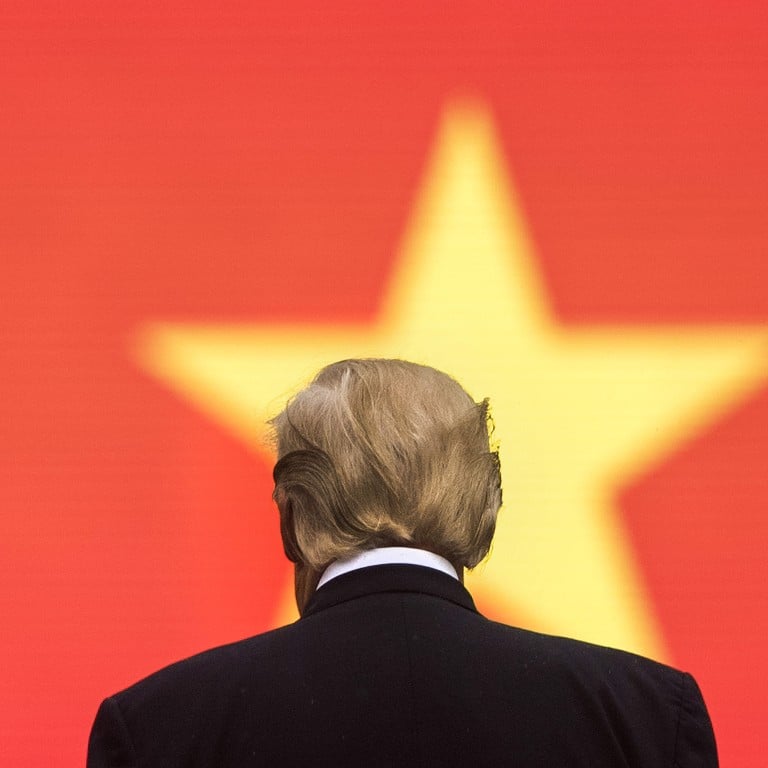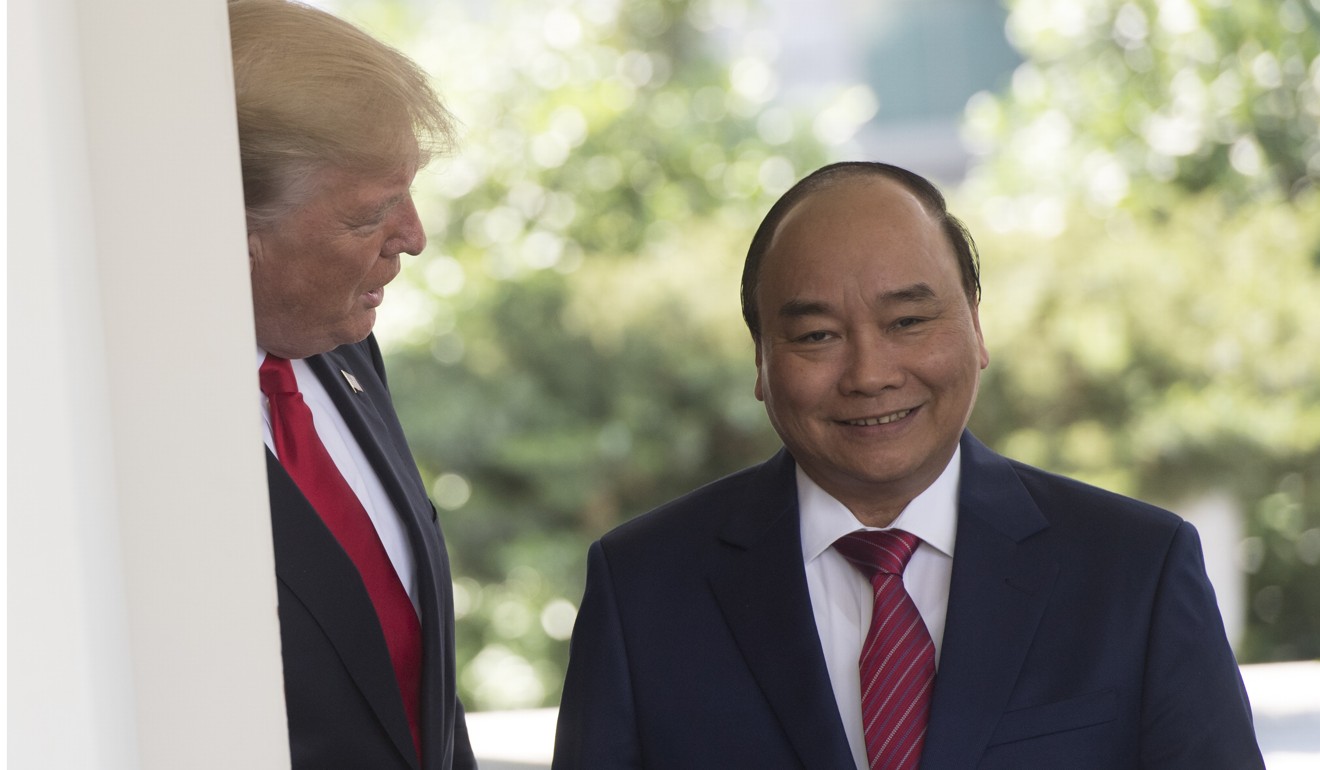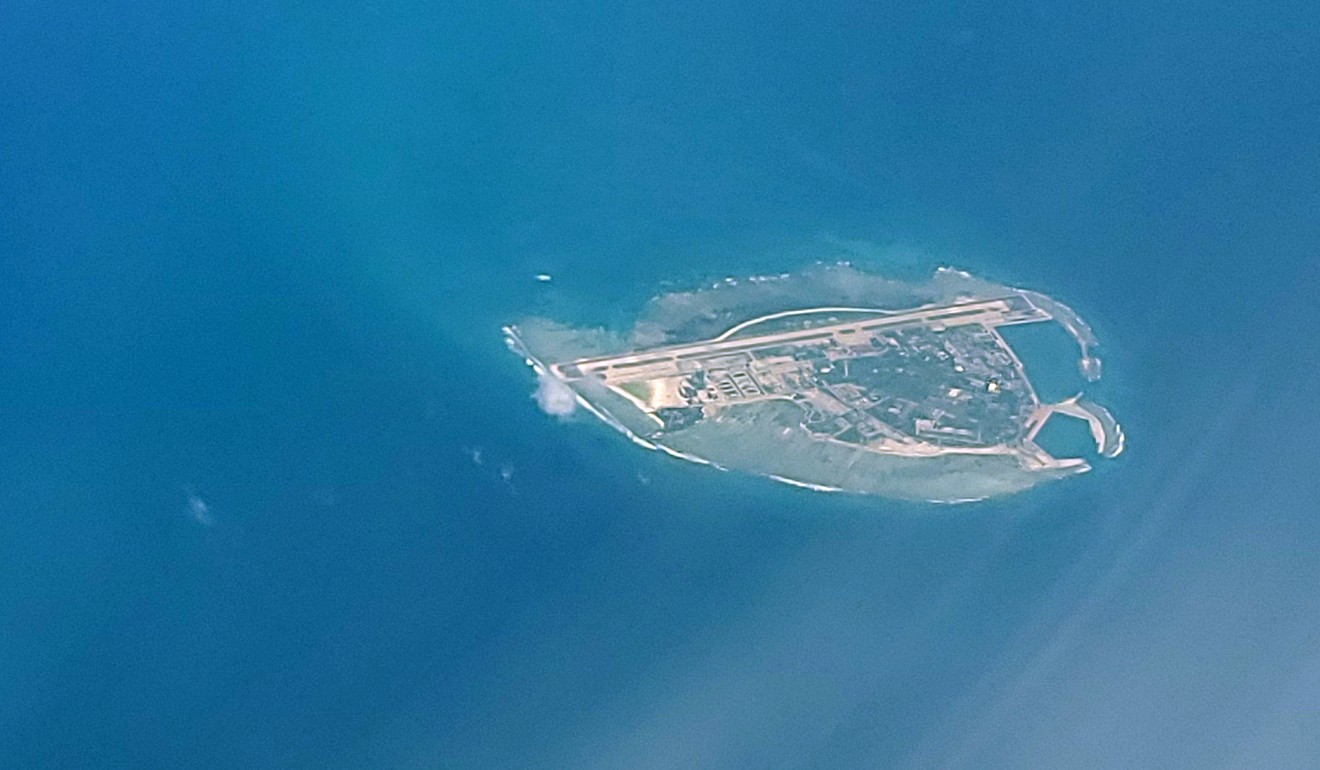
Vietnam and America: foes on paper, friends out of necessity
- Donald Trump has accused Vietnam of treating America ‘even worse’ than China does on trade, and has imposed heavy duties on its steel imports
- But tough rhetoric from Washington often belies the deepening convergence of their strategic interests as Beijing shakes up the region’s established order
“Almost the single worst abuser of everybody.”
His damning verdict was followed a few days later by an announcement from the US Department of Commerce that it would be imposing duties of up to 456 per cent on Vietnamese steel imports.
But despite these troubles, ties remain tight between the two former cold war foes as the two rediscover the importance of their relationship against the backdrop of an increasingly assertive China.

Four months later Trump made a two-day state visit to Vietnam during which he met Phuc and Nguyen Phu Trong, general secretary of the ruling Communist Party.
FROM TROOPS TO TRADE

CONVERGENCES TRANSCEND DIFFERENCES
However, trade has not been enough to drive the two apart. In security and defence, their views and interests are now more convergent than a few years ago, and will continue to take their relationship forward.
In 2013 then Vietnamese president Truong Tan Sang travelled to America to formally establish a “comprehensive partnership”. The agreement was based on “respect for the United Nations Charter, international law, each other’s political systems, independence, sovereignty, and territorial integrity”. It was of both symbolic and substantive significance, especially for Vietnam. By agreeing to build and advance the relationship “on the basis of respect for each other’s political systems”, the US officially accepted and agreed to respect Vietnam’s one-party system. The recognition was important for Hanoi because the Communist Party’s ideological conservatives strongly suspect the US wants to overturn Vietnam’s socialist regime through so-called “peaceful evolution”.
SHARED VIEWS
Beijing’s South China Sea stance is driving Vietnam into America’s arms
TRADE TRUMPS ALL
With Trump, relations often boil down to trade, but here too the two sides have a strong interest in advancing ties. China remains Vietnam’s largest trading partner but the US is its biggest export market. However, Vietnam’s trade interactions with the US are more complementary and, thereby, more beneficial than its ties with China. Stronger economic links with the US and other Western or advanced countries could help decrease Hanoi’s dependence on Beijing both politically and economically. Chinese leaders have refused to adjust their policies to make China’s trade with other countries more balanced and reciprocal, but Trump has been flexible and Hanoi has reciprocated. During Trump’s state visit in 2017, Vietnam agreed to purchase US$12 billion worth of American goods and services. In February Hanoi signed on a deal to buy 110 aircraft from Boeing worth more than US$21 billion, which led to Trump hailing Vietnam’s efforts to balance bilateral trade.
The US president’s harsh criticism of Vietnam in June and his imposition of steel imports therefore shocked many people in Vietnam because just a few months ago, he had lavished praise on his Vietnamese hosts. But again, like it has done since Trump’s election, the Vietnamese government responded positively to Washington’s concerns by vowing to buy more US goods. The convergence of their core interests means it will take more than Trump’s fickle nature to derail the relationship.
Xuan Loc Doan is a senior research fellow at the Global Policy Institute. This is an edited excerpt of an article titled Vietnam-US Relations Flourishing under Trump, published in ISEAS Perspective No 63
